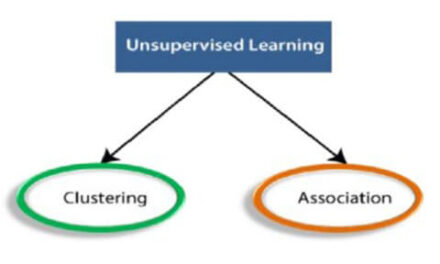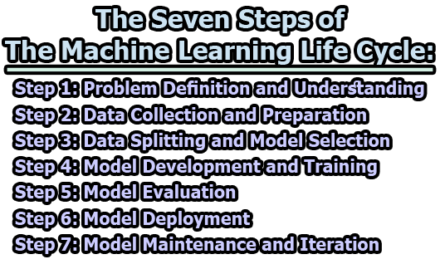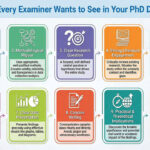Basic Understanding of Misinformation and Disinformation:
In today’s digital age, information spreads rapidly across social media, news platforms, and messaging apps. However, not all information is accurate or trustworthy. Misinformation refers to false or misleading information shared without harmful intent, while disinformation is deliberately created and distributed to deceive or manipulate audiences. Understanding the difference between the two is essential for individuals to navigate digital spaces responsibly and protect themselves and others from the harmful effects of false content. In the rest of this article, we will explore the basic understanding of misinformation and disinformation.
What is Misinformation?
Misinformation is defined as false, inaccurate, or misleading information that is shared, regardless of whether there is an intention to deceive. It differs from disinformation, which involves a deliberate effort to deceive people for political, financial, or social gain. In the case of misinformation, the person spreading it may genuinely believe the information is true and may not intend to cause harm. This makes it particularly challenging to detect and control.
For example, an individual might read a scientific article published several years ago and assume its findings are still valid, then share it online without realizing that newer studies have since disproven or revised those claims. Even though their intention was simply to inform others, they end up spreading inaccurate information. Misinformation can originate from honest mistakes, misinterpretations, lack of updated knowledge, or the rapid spread of information on social media platforms without proper verification.
The Impact of Misinformation:
The effects of misinformation can be far-reaching and harmful, often influencing real-world events and decisions. One of the most significant dangers lies in how misinformation can alter public opinion, distort facts, and erode trust in credible institutions. Even when local journalists and media outlets strive to verify facts and scrutinize content, they face difficulties—especially when false or misleading information comes from seemingly trustworthy sources, including government officials or reputable institutions.
Historical examples show just how serious these effects can be:
During the 2016 United States presidential election, organized misinformation campaigns circulated online, targeting specific groups of voters with false or misleading content. These efforts aimed to manipulate public perception, sway votes, and undermine the democratic process.
In the United Kingdom’s Brexit referendum, some claims that were widely shared—such as false promises about redirecting funds from the European Union to the National Health Service—contributed to confusion and misinformed voting decisions. Many citizens later expressed regret or frustration upon realizing they had made their decision based on incorrect assumptions.
Such cases highlight how misinformation can influence critical national decisions, deepen social and political divides, and shake the foundations of democratic societies.
Why Misinformation Matters:
Understanding and addressing misinformation is crucial because it poses a serious threat to both societal and personal well-being. On a larger scale, it undermines trust in key institutions such as the media, healthcare systems, and governments. When people become uncertain about what is true or who to trust, they may disengage from civic life, resist expert guidance, or support harmful policies based on flawed beliefs.
For instance, misinformation related to health—such as false claims about vaccines or treatments—can lead individuals to make dangerous medical decisions. In politics, when misinformation distorts facts, it can mislead voters, affect election outcomes, and polarize communities, making it harder for societies to find common ground.
On a personal level, consistently sharing misinformation—whether in conversations or online—can lead others to question your reliability and judgment. It may cause rifts in relationships, especially when false information fuels arguments or spreads fear and confusion.
In short, misinformation matters because it affects how people think, behave, and interact with each other. It can lead to poor decision-making, social division, and even physical harm. Therefore, building awareness about misinformation and learning how to recognize and prevent its spread are essential steps toward a more informed, responsible, and connected society.
What is Disinformation?
Disinformation refers to false or misleading information that is intentionally created and shared with the specific goal of deceiving or manipulating people. Unlike misinformation, which may be spread unknowingly or accidentally by individuals who believe the information to be true, disinformation is deliberate and often strategically designed to manipulate public opinion, distort facts, or achieve political, financial, or ideological goals.
Disinformation is often used as a weapon in information warfare, aiming to destabilize societies, undermine institutions, create mistrust, and provoke emotional reactions that prevent people from thinking critically or engaging constructively with others.
Key Characteristics of Disinformation:
- Intentionality: The defining feature of disinformation is the intent to deceive. Those who create and distribute disinformation are fully aware that the information is false or misleading. Their objective is not to inform but to manipulate or control how people think, behave, or vote. This intentional spread of falsehoods makes disinformation highly dangerous and unethical.
- Manipulation of Public Opinion: Disinformation is frequently used to sway public sentiment, influence political outcomes, or cause division within societies. By appealing to emotions—such as fear, anger, or patriotism—disinformation campaigns often succeed in bypassing critical thinking and rational analysis.
- Sophisticated Techniques: Disinformation is not always obvious or poorly made. In many cases, it is part of a well-coordinated campaign involving professional writers, graphic designers, fake news websites, bots, troll farms, and deepfake technologies. These campaigns may use real images or facts taken out of context to make their content appear credible and harder to detect.
Examples of Fake News and Disinformation:
- Political Propaganda: Political groups, governments, or activists may spread false claims or manipulated content about opponents to sway election results, undermine public confidence, or influence voter behavior. This might include fake quotes, doctored videos, or fabricated scandals.
- Fake News Websites: These are online platforms created specifically to publish clickbait headlines, fabricated stories, or sensational news with no factual basis. Some are monetized through ads, while others exist to push political or ideological agendas.
- Deepfakes: Deepfakes are advanced digital videos that use artificial intelligence to convincingly manipulate someone’s face or voice, making it appear as though they are saying or doing something they never actually did. Deepfakes can be used for political sabotage, blackmail, or social manipulation.
Impact of Disinformation:
Disinformation can have serious and far-reaching consequences for individuals, communities, and entire nations. Its effects go beyond confusion—they can actively harm democratic processes, public safety, and mental well-being.
- Undermining Democracy: By spreading lies and false narratives, disinformation erodes public trust in elections, media, and government institutions. When people cannot distinguish truth from falsehood, the democratic process suffers, and civic participation may decline.
- Inciting Violence and Social Unrest: False claims about individuals, ethnic groups, or nations can stir up hatred, suspicion, or retaliation. There have been documented cases where disinformation sparked mob violence, riots, or even played a role in escalating military conflicts.
- Public Health Risks: Disinformation related to health topics—such as vaccines, COVID-19, or medical treatments—can lead people to reject expert advice, delay treatment, or follow unsafe practices. This behavior not only endangers individuals but also amplifies public health crises.
- Mental Health Effects: Being constantly exposed to conflicting, false, or fear-inducing information can lead to anxiety, depression, and paranoia, particularly during times of crisis. The inability to trust any source of information can result in emotional exhaustion and a sense of helplessness.
Why Combating Disinformation Matters:
Disinformation is a strategic tool that undermines social cohesion and obstructs informed decision-making. In a world saturated with information, it is more important than ever for people to cultivate media literacy, develop critical thinking skills, and learn how to fact-check and verify sources.
Educational institutions, governments, tech companies, and civil society all have a role to play in fighting disinformation. However, individuals also have power—by being cautious about what they share, questioning suspicious content, and holding themselves accountable for the information they spread, everyone can help build a more truthful and resilient society.
The Psychology Behind Misinformation:
Understanding why misinformation spreads—and why people believe it—is not just a matter of facts or logic. Much of the explanation lies in human psychology, particularly how our brains process information, emotions, and social cues. Several psychological factors make individuals especially vulnerable to misinformation, especially in today’s fast-paced digital world.
1. Human Behaviour and Cognitive Biases: Human beings are not purely rational thinkers. Instead, we often rely on mental shortcuts (called heuristics) and cognitive biases to make quick decisions. These mechanisms are useful in some situations but can lead to poor judgment, especially when evaluating the accuracy of information.
- Confirmation Bias: One of the most powerful cognitive biases contributing to the spread of misinformation is confirmation bias. This is the natural tendency to:
- Seek out information that supports our pre-existing beliefs
- Ignore, dismiss, or discredit information that contradicts those beliefs
For example, if a person strongly supports a political party, they are more likely to believe and share content—articles, videos, or social media posts—that favor that party, even if the content is false or misleading. This bias can blind individuals to the truth and make them more vulnerable to misinformation that aligns with their worldview.
- Bandwagon Effect: Another key factor is the bandwagon effect, where people adopt certain beliefs, actions, or trends simply because others are doing so. When people see that a post or video has thousands of likes, shares, or supportive comments, they may assume the information is true or valuable—without critically assessing it. In online spaces, popularity often replaces credibility.
This effect becomes even more powerful in digital environments where trending topics and viral content are constantly highlighted, making it seem as if “everyone” believes or supports something—even if it’s false.
2. Role of Social Media Platforms: Social media platforms play a dual role in the spread of misinformation: they are both part of the problem and potential agents of the solution.
- Algorithm-Driven Echo Chambers: Social media algorithms are designed to keep users engaged by showing them content that aligns with their preferences, past behavior, and interactions. While this personalization enhances user experience, it also creates echo chambers—online spaces where people are exposed primarily to opinions, facts, and perspectives that reinforce their existing beliefs.
Over time, users inside these echo chambers become less likely to encounter alternative viewpoints or fact-based corrections. Repeated exposure to the same misleading or false information can cause the “illusion of truth” effect, where familiarity makes the content seem more credible, even if it’s completely false.
- Challenges of Regulation and Moderation: To counter the problem, many platforms have introduced AI-powered misinformation detection systems, fact-checking partnerships, and oversight boards to review controversial content. However, these efforts are often undermined by:
- The speed at which misinformation spreads
- The difficulty of identifying misleading content in real time
- Public concerns over censorship, free speech, and self-regulation
In many cases, platforms prioritize engagement over accuracy, allowing harmful content to spread rapidly before it can be addressed.
3. Emotional Triggers and Viral Spread: Misinformation is often designed to trigger strong emotional reactions, which increases its likelihood of being shared. Emotional content—whether it evokes fear, anger, shock, or even hope—tends to go viral much faster than neutral or purely factual content.
- Emotional Arousal Overrides Critical Thinking: When a person encounters emotionally charged content, their brain is more focused on the immediate emotional response than on evaluating the truthfulness of the message. This emotional arousal can suppress rational thinking and lead to impulsive actions, like quickly sharing a misleading headline or reacting without verifying the source.
For example, during a health crisis, a post claiming that a common household item “cures” a dangerous disease might be shared rapidly—because people are scared and desperately seeking solutions. The emotional intensity of such content short-circuits skepticism, allowing misinformation to spread unchecked.
In brief, the psychology behind misinformation reveals that it spreads not just because of technological flaws, but because of deep-seated human tendencies. Our biases, our emotional instincts, and the structure of social media platforms all play a part. To combat misinformation effectively, we must:
- Be aware of our own cognitive biases
- Practice critical thinking and fact-checking
- Break out of our echo chambers by engaging with diverse perspectives
- Demand greater transparency and accountability from digital platforms
By addressing both the human and technological elements of the misinformation problem, individuals and societies can build greater resilience against falsehoods and manipulation.
Spotting Misinformation (A Practical Guide):
In an age where information spreads rapidly—especially through social media—misinformation can easily go viral before it’s verified or corrected. To protect yourself and others, it’s essential to develop information literacy skills and learn how to critically evaluate sources, content, and context. This guide breaks down practical steps for identifying and avoiding misinformation.
1. Check the Source: The foundation of trustworthy information is a credible source. Before believing or sharing any content, take time to investigate where it came from.
Examine the URL: Pay close attention to the website address. Fake or misleading sites often mimic legitimate ones by:
- Using misspelled or suspicious domains (e.g., bbcnews.co instead of bbc.com)
- Employing unconventional endings like “.co,” “.lo,” or “.info” to seem official
- Adding extra words to credible-sounding names (e.g., cnn-update.com)
- A strange or unfamiliar domain is a red flag.
Research the Publisher: Visit the “About Us” page of the website. Ask:
- Who owns or funds the platform?
- What is its editorial mission?
- Does it disclose staff and policies?
Legitimate outlets are transparent. If there’s no clear information, the source may be unreliable.
Verify the Author’s Credentials: Check who wrote the article:
- Is the author’s name listed?
- Do they have a history of credible reporting?
- Have they contributed to reputable outlets?
If you can’t find any background on the author, be cautious.
Stick to Trusted News Outlets: Some widely recognized and reliable sources include:
- BBC News (UK)
- The Guardian (UK)
- Reuters (Global)
- The New York Times (US)
- Associated Press (AP) (Global)
These organizations are known for journalistic standards, fact-checking, and accountability.
2. Use Fact-Checking Websites: Before accepting or spreading a claim, consult independent, nonpartisan fact-checkers. Some of the best include:
- com – Debunks viral myths, internet rumors, and hoaxes
- org – Focuses on political claims and misleading ads
- com – Rates political statements on a “Truth-O-Meter”
- org – UK-based, verifies claims in media and politics
- BBC Reality Check – Investigates and corrects misleading public claims
These platforms specialize in investigating dubious claims and providing verified context.
3. Look for Red Flags in the Content: Misinformation often follows patterns. Be alert to the following warning signs:
- Sensational Headlines: Over-the-top headlines filled with capital letters, exclamation marks, or clickbait language are designed to provoke emotional responses.
Example: “SHOCKING!!! Doctors Don’t Want You to Know This Cure!!!”
Such headlines prioritize attention-grabbing over accuracy.
- No Author Attribution: Legitimate articles usually name their writers. If no author is listed, it may be a sign of low editorial standards or deliberate anonymity.
- Poor Grammar and Spelling: Professional news organizations invest in editing and proofreading. Frequent errors suggest the content may not have gone through a proper editorial process.
- Lack of Evidence: Credible journalism includes:
- Links to official sources
- Data or statistics
- Quotes from experts
If an article makes bold claims but offers no proof, be skeptical.
- Outdated Information: Old stories or studies are sometimes re-shared as if they are new. Always:
- Check the date of publication
- Verify if the context is still relevant
Misinformation thrives when old content is recycled deceptively.
4. Verify Before Sharing: Before passing information along, follow these steps to ensure it’s true:
- Search for the Story on Reputable Sites: Type the headline or keywords into a search engine and see if trusted outlets are covering the story. If it’s real, multiple legitimate sources will likely be reporting it.
- Check Fact-Checking Sites: Use the platforms mentioned earlier (Snopes, FactCheck.org, etc.) to see if the claim has already been investigated and debunked.
- Cross-Check with Multiple Sources: Don’t rely on just one website. See if different reputable outlets are reporting the same facts and reaching similar conclusions. Be cautious if the story appears only on obscure or partisan websites.
- Look for Original Reporting: Determine whether the article contains original journalism or simply reuses content from other places. Original reports usually offer firsthand interviews, on-the-ground facts, or official documents.
- Pause and Reflect Before Sharing: Ask yourself:
- “Why am I sharing this?”
- “Does this confirm my beliefs or just make me feel outraged?”
- “Have I checked if this is true?”
Sharing false information, even unknowingly, can damage reputations, spread fear, and undermine trust—all with a single click.
Spotting misinformation is not always easy, but with awareness and careful evaluation, anyone can learn to separate fact from fiction. By developing a habit of checking sources, fact-checking claims, and questioning emotional content, you can become a more informed and responsible participant in the digital world.
Digital Hygiene (How to Clean Up Your Online Presence):
In an increasingly digital world, the information we consume and share online has a direct impact on our understanding of reality, our relationships, and the well-being of our communities. Practicing good digital hygiene helps reduce the spread of misinformation, enhances your online experience, and creates a more informed and respectful digital space.
1. Curate Your Feed: A healthy online environment begins with carefully managing the content you consume. Much like organizing your physical environment, curating your digital spaces helps remove clutter and toxic influences.
Unfollow Unreliable Sources:
- Regularly assess the accounts, websites, and pages you follow on social media and news platforms.
- If a source consistently shares unverified, misleading, or sensationalist content, unfollow or mute it.
- This reduces cognitive overload, helps prevent misinformation from reaching you, and ensures your feed is more accurate and balanced.
Diversify Your Content Consumption: Echo chambers—environments where you’re only exposed to similar viewpoints—can distort your understanding of complex issues. To avoid this:
- Follow a variety of reputable news outlets, especially those that represent different political or cultural perspectives. Include:
- News aggregators (e.g., Google News, Flipboard) that present a range of stories from multiple sources.
- Subject-matter experts such as scientists, economists, or historians for evidence-based insights.
- International news outlets like Al Jazeera, Deutsche Welle, or The Straits Times for global perspectives.
Use Content Moderation Tools: Many platforms allow you to control what you see without unfollowing people or organizations:
- Mute or hide posts based on keywords, topics, or accounts.
- Customize your feed by prioritizing “favorites” or “close friends” to reduce exposure to repetitive or false content.
- Platforms like Instagram, Facebook, and X (Twitter) offer tools to refine what you see, improving your digital experience.
2. Use Fact-Checking Tools: Proactively integrating fact-checking tools into your digital habits is a smart defense against misinformation. These tools help verify claims, spot manipulation, and distinguish fact from fiction.
Browser Extensions: Install tools directly into your web browser for real-time information verification:
- NewsGuard: Ranks websites based on their journalistic standards, giving you visual indicators about their trustworthiness as you browse.
- Fakespot: Analyzes online reviews, helping you avoid fake product endorsements—especially helpful on e-commerce sites like Amazon.
Reliable Fact-Checking Websites: Use these go-to platforms to investigate questionable information:
- com – Covers urban legends, viral claims, and internet rumors across a wide range of topics.
- com – Rates political statements on a scale from “True” to “Pants on Fire” and provides clear context.
- org (UK) – Focuses on verifying claims made in British media, politics, and public life.
Social Media Tools: Social platforms have begun incorporating fact-checking functions:
- Facebook works with third-party organizations to flag and label false information. You may receive alerts when attempting to share flagged content.
- Birdwatch by Twitter (now X) allows users to add community-based notes to misleading tweets, providing context from multiple perspectives.
3. Correcting Misinformation: Identifying misinformation is only the first step—how you respond to it can make a real difference in helping others understand the truth.
Be Polite and Respectful:
- Approach people who share misinformation with empathy and understanding.
- Remember: most people share inaccurate information unintentionally. A respectful tone encourages open dialogue rather than defensiveness.
Provide Evidence:
- Don’t just say “that’s wrong”—show why it’s wrong.
- Include links to trusted fact-checking websites or reputable news articles.
- Use simple, clear explanations when possible, especially if the topic is technical or scientific.
Decide Between Public and Private Correction:
- If the misinformation was shared publicly, consider replying respectfully with corrections.
- If it involves a friend or family member and you want to preserve the relationship, a private message may be more appropriate and less embarrassing for them.
Avoid Arguments:
- If the person becomes aggressive or refuses to listen, avoid escalating the conversation.
- Calmly repeat verified facts and disengage if necessary. Not every conversation will lead to a breakthrough, and that’s okay.
Encourage Verification:
- Instead of just stating the facts, invite the other person to explore the truth on their own.
- Suggest specific resources like:
- “Have you checked this on Snopes?”
- “You might want to compare this with what Reuters or the BBC is reporting.”
Practicing digital hygiene means being intentional about what you consume, believe, and share online. It’s not just about protecting yourself—it’s about promoting a healthier, more informed digital community. Whether by unfollowing unreliable sources, fact-checking suspicious claims, or respectfully correcting misinformation, your everyday actions contribute to a more trustworthy online space.
Educating Yourself and Others:
In an age where information—and misinformation—travels faster than ever, developing the skills to identify and combat false content is not just a personal responsibility but a civic one. Becoming well-informed and helping others do the same can have a profound impact on digital communities, public trust, and decision-making. This section explores how to strengthen your news literacy, stay informed about misinformation tactics, and effectively educate those around you.
1. Continuous Learning and News Literacy: Misinformation constantly evolves, often adapting to new technology, platforms, and crises. Staying informed requires an ongoing commitment to learning. It’s not enough to rely on instinct—digital literacy must be practiced and refined.
Follow Credible Sources on Media Literacy: Stay connected to organizations that are at the forefront of fighting misinformation. These groups provide valuable updates, research, and tools:
- Digital Forensics Research Lab (DFRLab) – Offers in-depth investigations into disinformation campaigns and digital threats.
- First Draft News – Specializes in training journalists and the public in verifying digital content.
- Media Literacy Now, The News Literacy Project, and Common Sense Media – Provide guides, articles, and toolkits for various age groups.
You can follow these groups on social media, subscribe to their newsletters, or bookmark their blogs to receive regular updates on the latest trends and strategies.
Engage in Online Courses: There are many accessible and high-quality online courses that teach digital and media literacy:
- Coursera – Offers courses like “Making Sense of the News” by the University of Hong Kong or “Media Literacy” by the University of Illinois.
- edX and FutureLearn – Host university-level programs on subjects such as fake news detection, social media manipulation, and critical thinking.
- Google’s Digital Garage – Includes free workshops and modules on evaluating online information.
These platforms often provide certificates upon completion, adding value for students, educators, and professionals alike.
Attend Webinars and Workshops: Keep an eye out for free webinars, seminars, and virtual events hosted by educational institutions and non-profit organizations. They often feature:
- Experts in psychology, media studies, and technology.
- Demonstrations of new tools to detect deepfakes or manipulated content.
- Real-world case studies and discussions on major misinformation campaigns.
Examples of useful hosts:
- MediaSmarts (Canada)
- The News Literacy Project (USA)
- Full Fact (UK)
Stay Updated on Platform Changes: Social media platforms frequently update their algorithms, content moderation rules, and reporting systems. By following:
- Official blogs and update centers (e.g., Meta Newsroom, Twitter/X Updates),
- Technology news outlets like The Verge, Wired, or TechCrunch,
You’ll remain aware of how platforms detect and flag misinformation, and how you can adjust your settings or reporting habits accordingly.
2. Teach Others: Spreading knowledge is one of the most effective ways to build a resilient digital society. Teaching doesn’t have to be formal—it can be part of everyday interactions and online behavior.
Start Conversations: Misinformation often enters conversations with friends and family. When it does:
- Avoid accusations. Use collaborative language like:
“Let’s check this out together—I saw something similar last week that turned out to be false.”
- Ask questions to encourage critical thinking:
“Where did this come from? Have you seen other sources say the same thing?”
This encourages reflection rather than defensiveness.
Host a Digital Literacy Session: Organizing a workshop or informal session can amplify awareness among peers:
- Use resources from Common Sense Media, Full Fact, or News Literacy Project to structure your session.
- Topics to include:
- Spotting fake headlines
- Understanding how algorithms shape feeds
- Evaluating the reliability of sources
- Practicing with fact-checking tools
This can be done at schools, libraries, workplaces, or even virtually via Zoom or Google Meet.
Share Educational Content on Social Media: Use your platforms to spread helpful tips in accessible formats:
- Post infographics, short videos, or simple checklists.
- Example posts:
“Misinformation Alert: If it’s too outrageous to be true, it probably isn’t. Check before you click. #DigitalLiteracy”
“Fact-check tip: Use Snopes or PolitiFact before sharing. False info can go viral fast! #ThinkBeforeYouShare”
This kind of public content encourages others to engage with accurate, useful information and serves as a digital ripple effect.
Create or Join Online Communities: Get involved in online spaces that promote critical thinking and media literacy:
- Reddit Communities:
- r/MediaLiteracy: Focused on discussing strategies and news related to misinformation.
- r/AskHistorians: A place for reliable historical information, often used to correct or challenge false historical claims.
- Facebook Groups and Discord servers dedicated to digital literacy or fact-checking often feature ongoing discussions, article sharing, and debunking challenges.
Use Real-World Examples: Help others understand the impact of misinformation by making it tangible:
- Discuss major misinformation events, like:
- False claims during elections
- Health-related hoaxes during the COVID-19 pandemic
- Misleading news during natural disasters or international conflicts
Explain what went wrong, how it could have been prevented, and what tools or strategies might have helped verify the facts in time.
Education is one of the strongest weapons against misinformation. By continuously educating yourself and sharing your knowledge with others, you become part of a wider effort to build a more informed and critical-thinking society. Informed individuals are better equipped to navigate digital spaces, support truth, and empower others to do the same.
The Role of Personal Responsibility:
In today’s digital world, where information travels at lightning speed across platforms, every individual plays a crucial role in maintaining a trustworthy information ecosystem. With the ability to share news, opinions, and content instantly comes the responsibility to ensure that what we share is accurate, ethical, and thoughtful. Personal responsibility in the digital space is not optional—it is a necessary part of being an informed, respectful, and engaged digital citizen.
1. Mindful Sharing:
The Ease and Risk of Sharing: Modern platforms make sharing content as simple as clicking a button. However, this convenience also means that false information can spread rapidly, especially when users act impulsively or emotionally. That’s why it’s vital to think before sharing.
The Amplification Effect: Every piece of content you share has the potential to reach audiences far beyond your direct circle. A single tweet or post can be retweeted, re-posted, or quoted thousands of times—multiplying its impact exponentially. Therefore, what you choose to share matters.
Before clicking “share,” ask yourself:
- Is this information verified? Check if the content comes from a credible source and whether it has been confirmed by other reputable outlets.
- Why am I sharing this? Reflect on your motivation. Are you sharing to inform, help, or simply react emotionally?
- Could this be harmful? Consider whether the content could mislead, frighten, or harm someone unintentionally.
Avoid Emotional Sharing: Misinformation often thrives on emotional responses. Posts that evoke outrage, fear, or extreme joy are more likely to be shared without scrutiny. Take a step back:
- Pause before sharing. Give yourself time to calm down and think clearly.
- Fact-check emotionally charged content. The more sensational it is, the more likely it might be distorted or false.
2. Critical Thinking: Critical thinking is the foundation of responsible digital behavior. It empowers you to evaluate, question, and verify information before accepting or spreading it.
Question the Source: Every piece of content originates somewhere. Ask:
- Who created this? Is it a professional journalist, a known organization, a random social media user, or a bot?
- What’s their reputation? Are they known for spreading reliable information or misinformation?
- What’s their intent? Could the message be politically, commercially, or ideologically motivated?
Analyze the Content: Look deeper into the message itself:
- Check the evidence. Are facts, data, or credible references included to support the claim? If not, it may be speculation or opinion.
- Look for logic and coherence. Does the argument make sense, or does it jump to conclusions or use exaggerated language?
- Cross-check with other sources. What do other outlets or experts say? Are there contradictions?
Reflect Before You React: Being a responsible digital participant also means turning the lens inward:
- Why do I believe this? Is it because it aligns with my worldview or confirms my bias?
- What might be missing? Sometimes, crucial context is left out. Consider what else you would need to know to make an informed judgment.
3. Be Part of the Solution: You don’t have to be a journalist or a digital expert to fight misinformation. Every user can take active steps to promote truth and digital responsibility in their circles.
Educate Yourself and Others:
- Make learning about digital literacy and media ethics a priority.
- Follow reputable sources and fact-checking organizations.
- Share useful articles, tools, and tips with your network.
- Help others spot red flags in misinformation (e.g., fake URLs, manipulated images).
Promote Media Literacy: Make media literacy a shared value in your environment:
- Host or join discussions about misinformation in schools, universities, workplaces, or online groups.
- Organize workshops using materials from resources like:
- Common Sense Media
- The News Literacy Project
- Full Fact
- Teach others how to evaluate sources, question headlines, and verify stories.
Report Misinformation: Most social media platforms offer tools to report misleading content. Use them.
- Flag or report posts that are demonstrably false or harmful.
- Encourage others to do the same, especially in times of crisis (e.g., elections, public health emergencies).
Engage Constructively: When someone you know shares false or misleading content:
- Approach them respectfully—assume they didn’t know it was incorrect.
- Share correct information and reliable sources.
- Avoid public shaming. Instead, message them privately if appropriate to preserve trust and receptiveness.
Support Trusted Sources: Credible journalism plays a critical role in maintaining informed societies.
- Subscribe to reliable news outlets.
- Share and promote articles from well-vetted media organizations.
- Avoid promoting outlets known for clickbait or misinformation, even if they occasionally publish something accurate.
Every post you share and every conversation you have online shapes the digital environment we all live in. By practicing mindful sharing, exercising critical thinking, and actively promoting truth, you become part of the solution to misinformation. Personal responsibility online is more than just avoiding errors—it’s about creating a safer, smarter, and more informed digital world for everyone.
In conclusion, combating misinformation and disinformation begins with awareness and critical thinking. By understanding their definitions, recognizing common signs, and verifying sources before sharing, individuals can play a vital role in reducing the spread of false information. A well-informed public is key to preserving trust, promoting truth, and maintaining the integrity of our digital and real-world communities.
Frequently Asked Questions (FAQs):
What is the difference between misinformation and disinformation?
Misinformation is false or misleading information shared without intent to deceive. Disinformation, on the other hand, is deliberately created and shared with the purpose of misleading people or influencing opinions.
Why do people fall for misinformation?
People often fall for misinformation due to cognitive biases like confirmation bias, emotional reactions, or a lack of media literacy. They may trust content that aligns with their beliefs or appears popular online.
How does disinformation spread so quickly?
Disinformation spreads rapidly because of social media algorithms, emotional engagement, and sharing without verification. False content is often sensational and triggers strong emotional reactions, making people more likely to share it.
What are some common signs of misinformation?
- Sensational headlines in all caps or with lots of exclamation marks
- Lack of credible sources or author attribution
- Poor grammar and spelling
- No supporting evidence or data
- Outdated information shared as recent
How can I verify if information is true or false?
Use fact-checking websites like Snopes, PolitiFact, FactCheck.org, or FullFact. Also, compare reports across reputable news sources and look for original sources or official statements.
What should I do if I accidentally shared misinformation?
If you realize you’ve shared misinformation, delete the post, acknowledge the mistake, and share a correction with verified information. This helps reduce further spread and builds credibility.
What are echo chambers and how do they affect what I see online?
Echo chambers are online environments where users are mostly exposed to information that confirms their existing beliefs. They limit exposure to diverse viewpoints and can reinforce misinformation by repetition.
How can I help others avoid misinformation?
- Share fact-checking tools and credible sources
- Start respectful conversations about questionable content
- Encourage critical thinking and verification
- Educate others through workshops, social media, or group discussions
Do social media platforms do anything to stop misinformation?
Yes, many platforms use AI detection, content moderation, and third-party fact-checkers to identify and limit the spread of false content. However, these systems are not perfect and rely on users to report issues as well.
Why is it important to fight misinformation and disinformation?
Misinformation can harm public health, undermine democracy, and fuel division. Being informed helps protect communities and ensures decisions are made based on truth, not manipulation.
References:
- Allcott, H., & Gentzkow, M. (2017). Social Media and Fake News in the 2016 Election. Journal of Economic Perspectives, 31(2), 211-236. https://doi.org/10.1257/jep.31.2.211
- Brady, W. J., Wills, J. A., Jost, J. T., Tucker, J. A., & Van Bavel, J. J. (2017). Emotion shapes the diffusion of moralized content in social networks. Proceedings of the National Academy of Sciences, 114(28), 7313-7318. https://doi.org/10.1073/pnas.1618923114
- Cinelli, M., et al. (2021). The echo chamber effect on social media. Proceedings of the National Academy of Sciences, 118(9). https://doi.org/10.1073/pnas.2023301118
- Cook, J., & Lewandowsky, S. (2011). The Debunking Handbook.
- Guess, A., Nyhan, B., & Reifler, J. (2018). Selective exposure to misinformation: Evidence from the consumption of fake news during the 2016 US presidential campaign. European Research Council.
- Hobbs, R. (2017). Create to Learn: Introduction to Digital Literacy. Wiley.
- Lewandowsky, S., & Cook, J. (2020). The Conspiracy Theory Handbook.
- Lewandowsky, S., Ecker, U. K. H., & Cook, J. (2017). Beyond misinformation: Understanding and coping with the “post-truth” era. Journal of Applied Research in Memory and Cognition, 6(4), 353–369. https://doi.org/10.1016/j.jarmac.2017.07.008
- Lewandowsky, S., Cook, J., & Ecker, U. K.H. (2017). Letting the gorilla emerge from the mist: Getting past post-truth. Journal of Applied Research in Memory and Cognition, 6(4), 418–424. https://doi.org/10.1016/j.jarmac.2017.11.002
- Metzger, M. J., & Flanagin, A. J. (2013). Credibility and trust of information in online environments: The use of cognitive heuristics. Journal of Pragmatics, 59, 210-221. https://doi.org/10.1016/j.pragma.2013.07.012
- Moore, M., & Ramsay, G. (2017). UK media coverage of the 2016 EU Referendum campaign. King’s College London, Centre for the Study of Media, Communication and Power.
- Nickerson, R. S. (1998). Confirmation Bias: A Ubiquitous Phenomenon in Many Guises. Review of General Psychology, 2(2), 175-220. https://doi.org/10.1037/1089-2680.2.2.175
- Pariser, E. (2011). The Filter Bubble: What the Internet Is Hiding from You. Penguin Press.
- Paul, R., & Elder, L. (2006). Critical Thinking: Tools for Taking Charge of Your Learning and Your Life. Pearson.
- Silverman, C. (2015). Lies, Damn Lies, and Viral Content. Tow Center for Digital Journalism, Columbia Journalism School.
- Sundar, S. S. (2008). The MAIN Model: A Heuristic Approach to Understanding Technology Effects on Credibility. Digital Media, Youth, and Credibility, 73-100. Retrieved From https://www.issuelab.org/resources/875/875.pdf
- Vosoughi, S., Roy, D., & Aral, S. (2018). The spread of true and false news online. Science, 359(6380), 1146-1151. https://doi.org/10.1126/science.aap9559
- Vraga, E. K., & Bode, L. (2018). I do not believe you: How providing a source corrects health misperceptions across social media platforms. Information, Communication & Society, 21(10), 1337-1353. https://doi.org/10.1080/1369118X.2017.1313883
- Wardle, C., & Derakhshan, H. (2017). Information Disorder: Toward an Interdisciplinary Framework for Research and Policy Making. Council of Europe Report.

Library Lecturer at Nurul Amin Degree College










